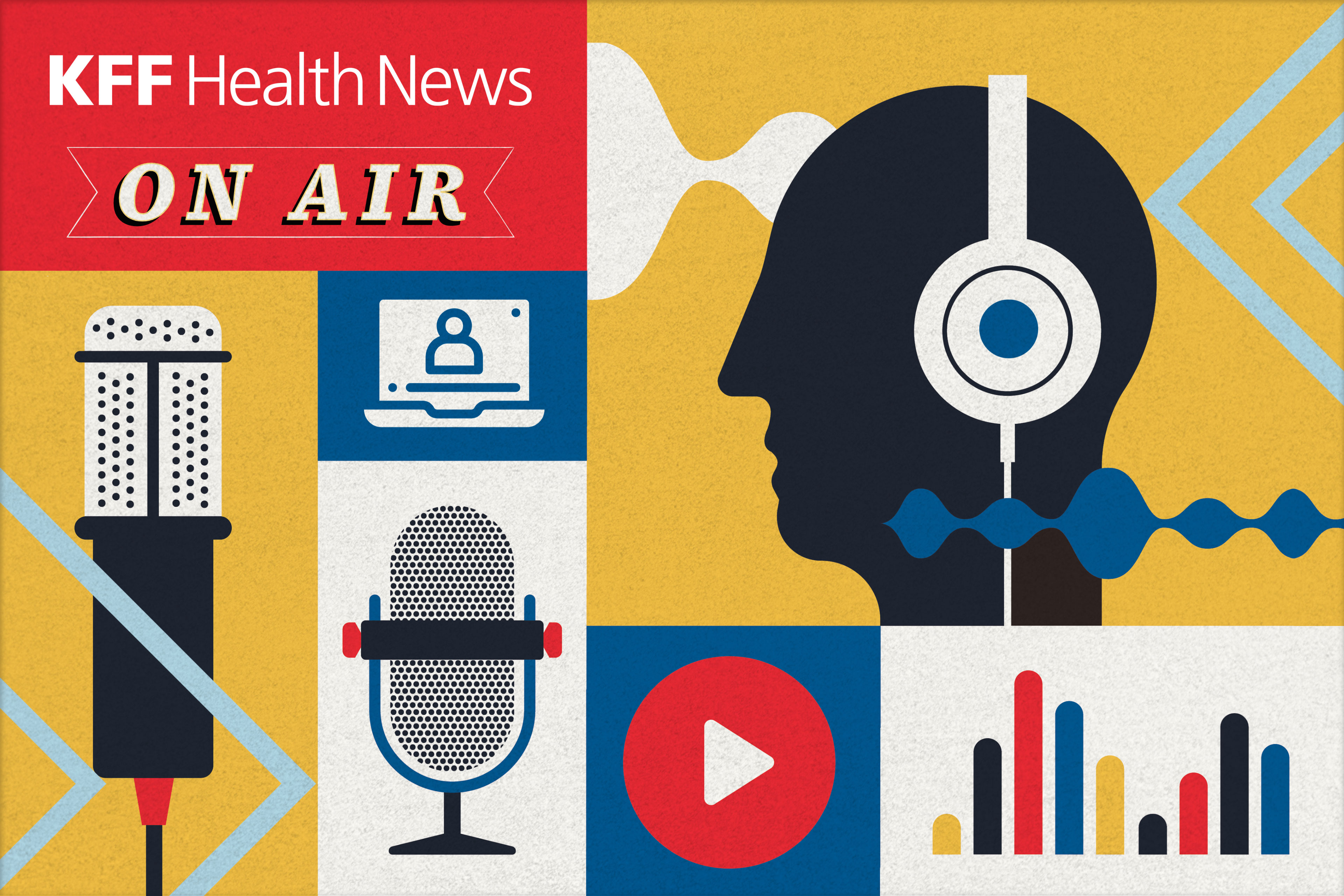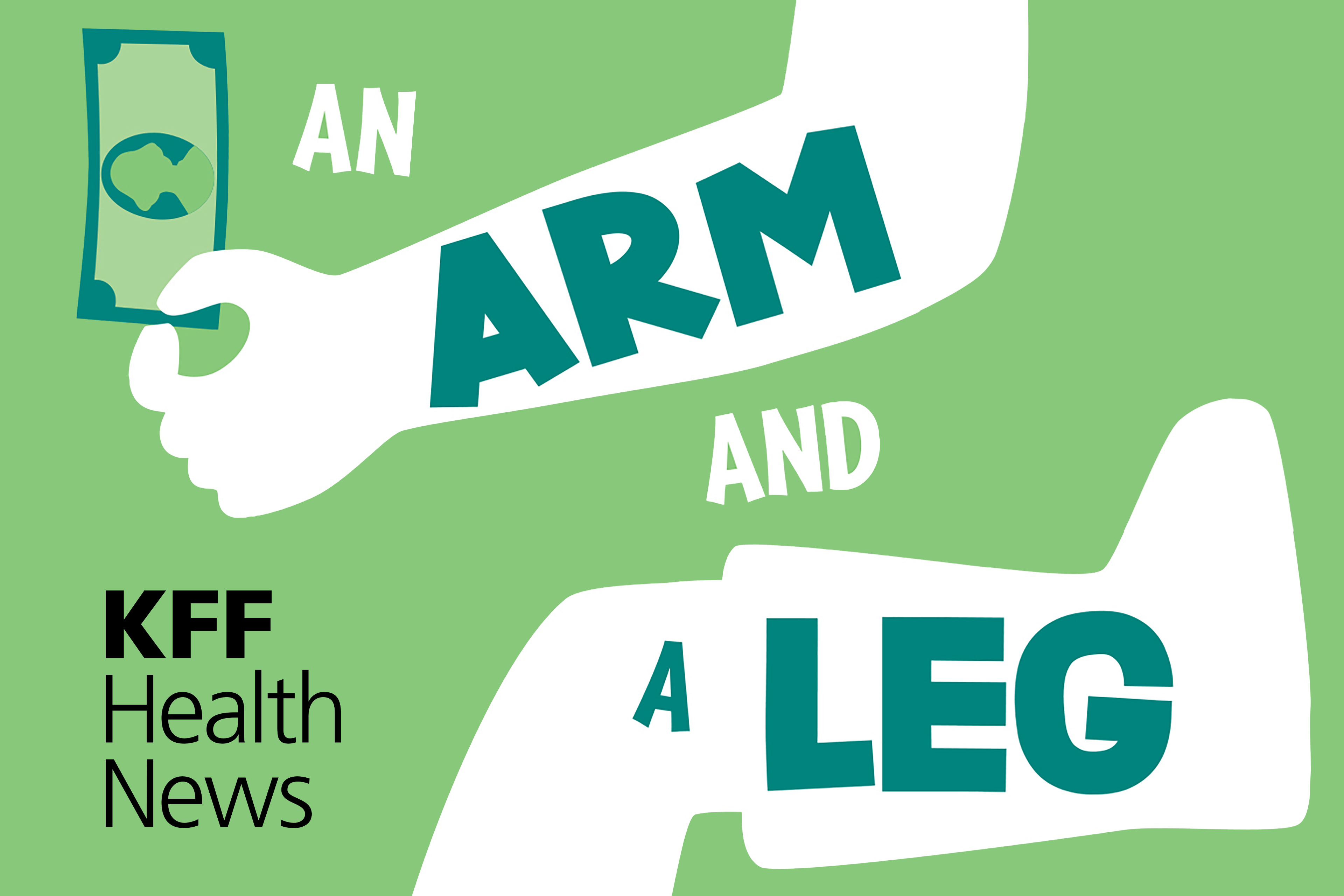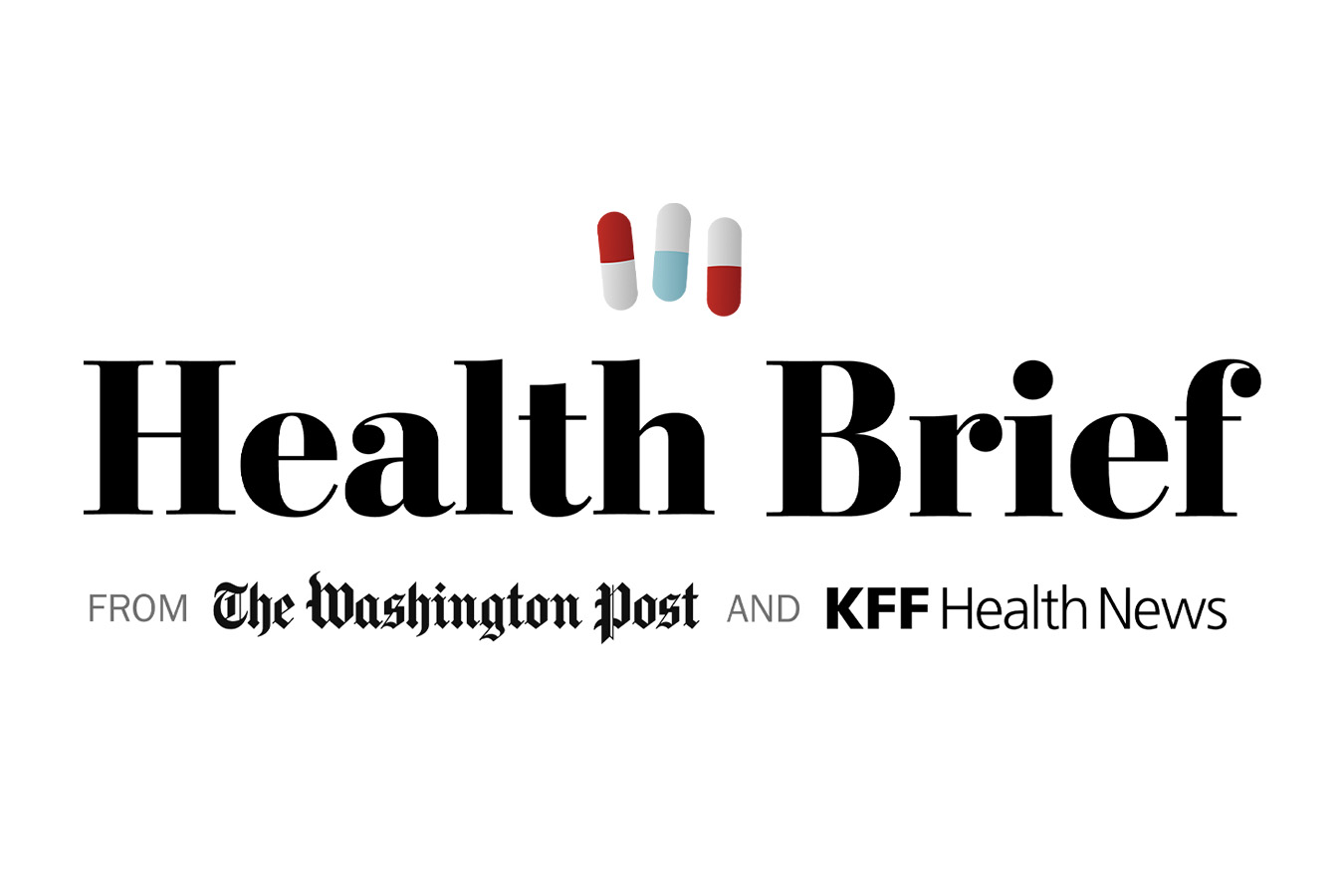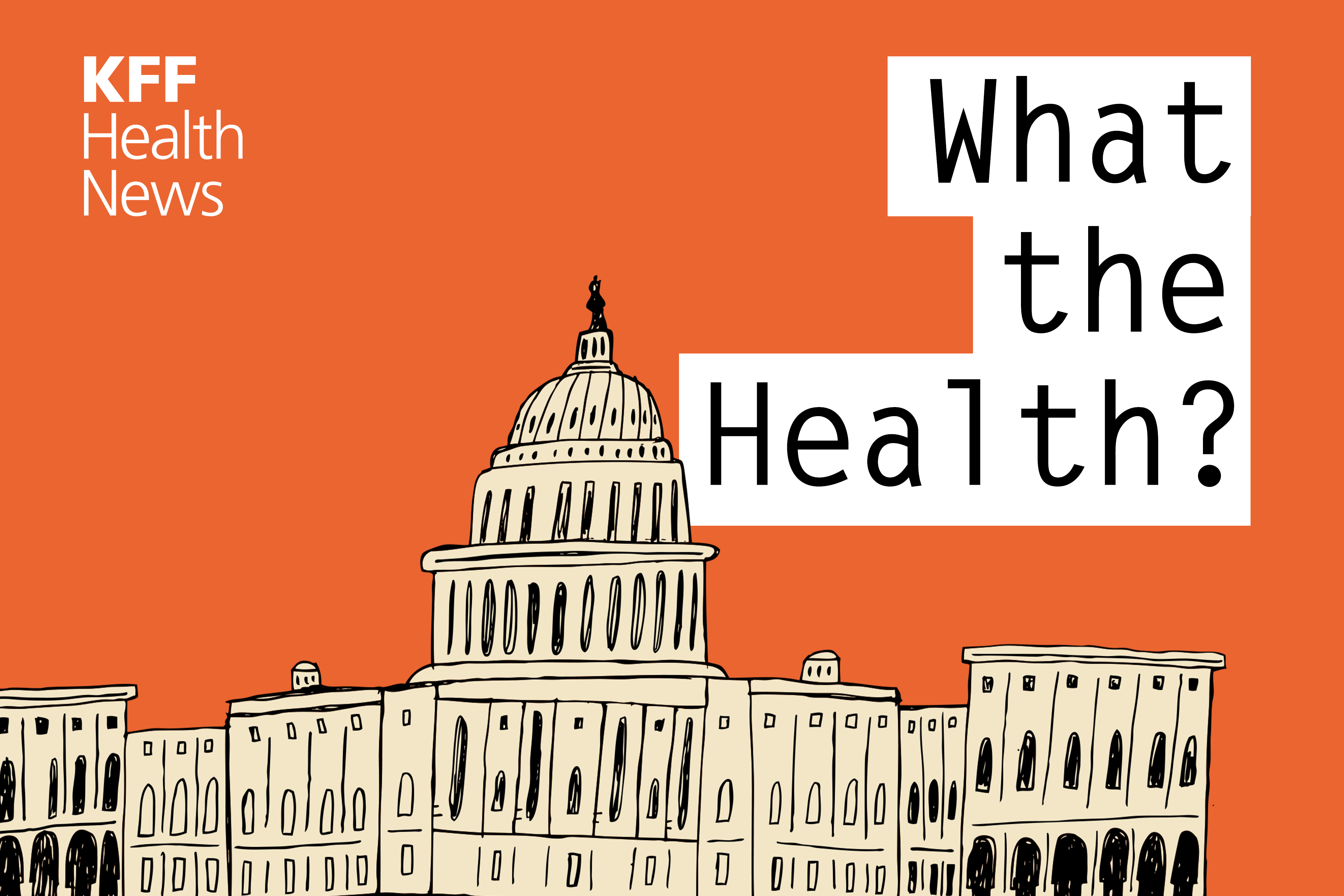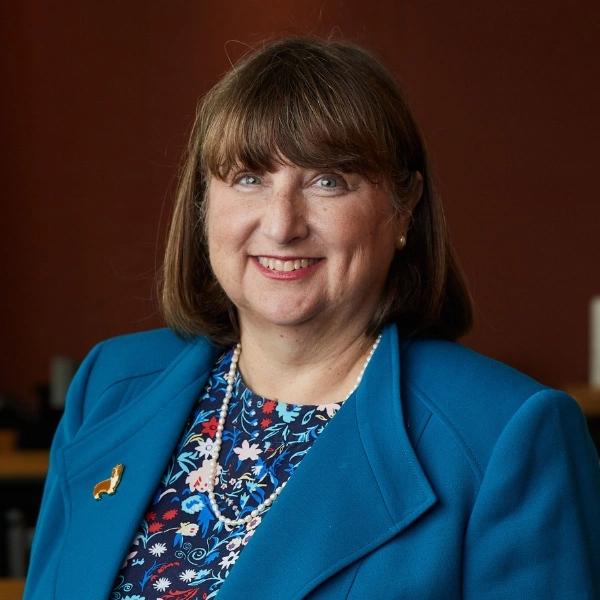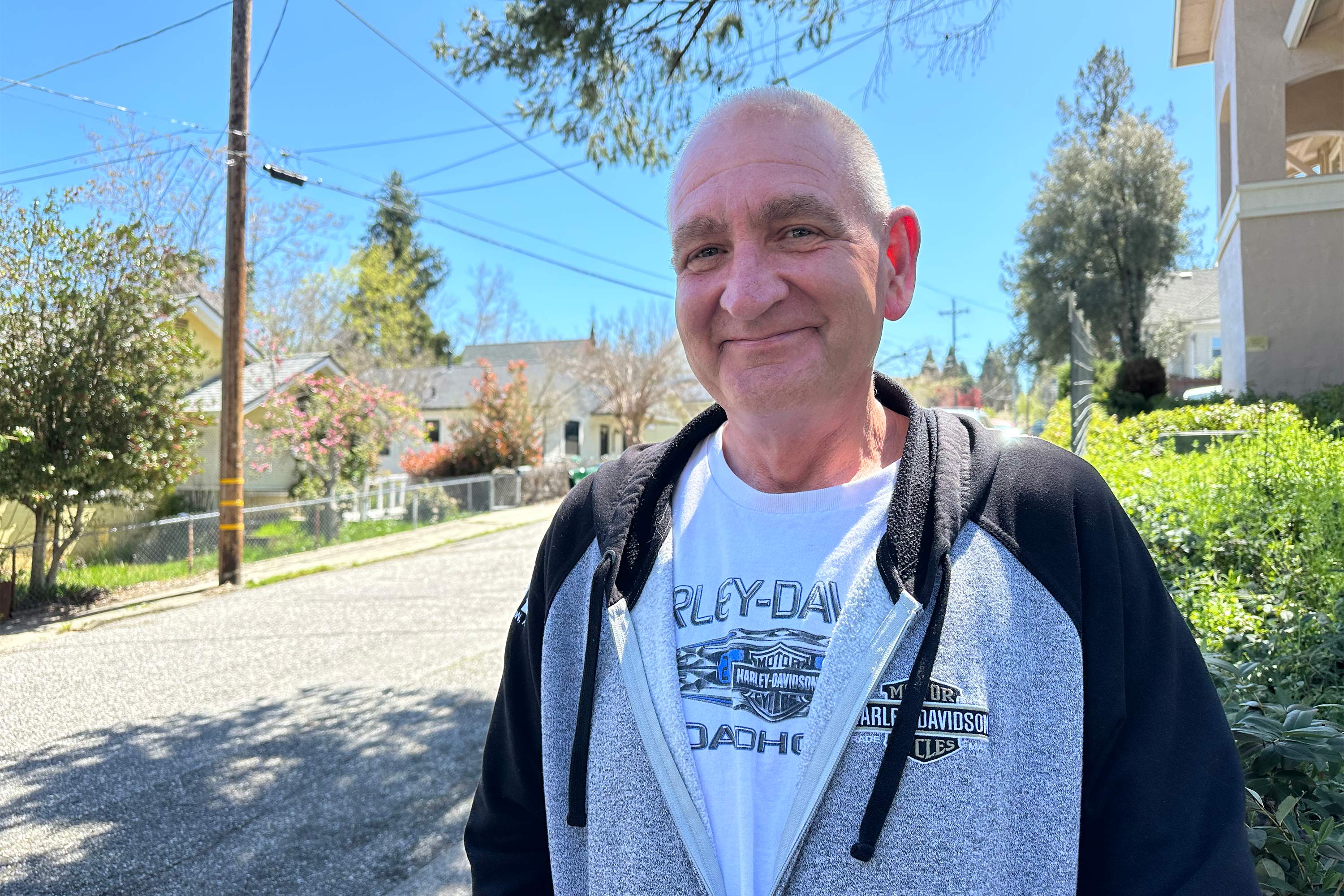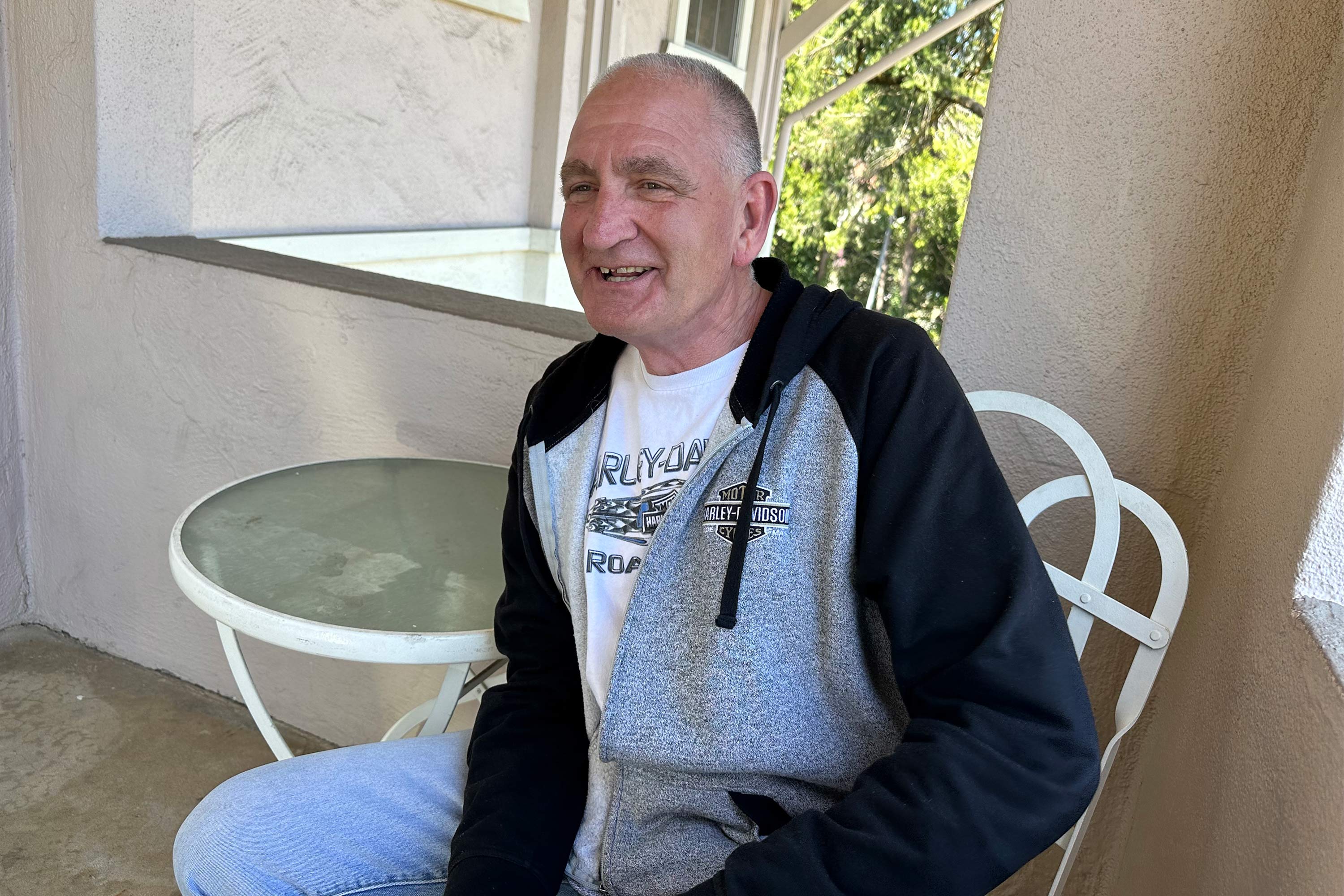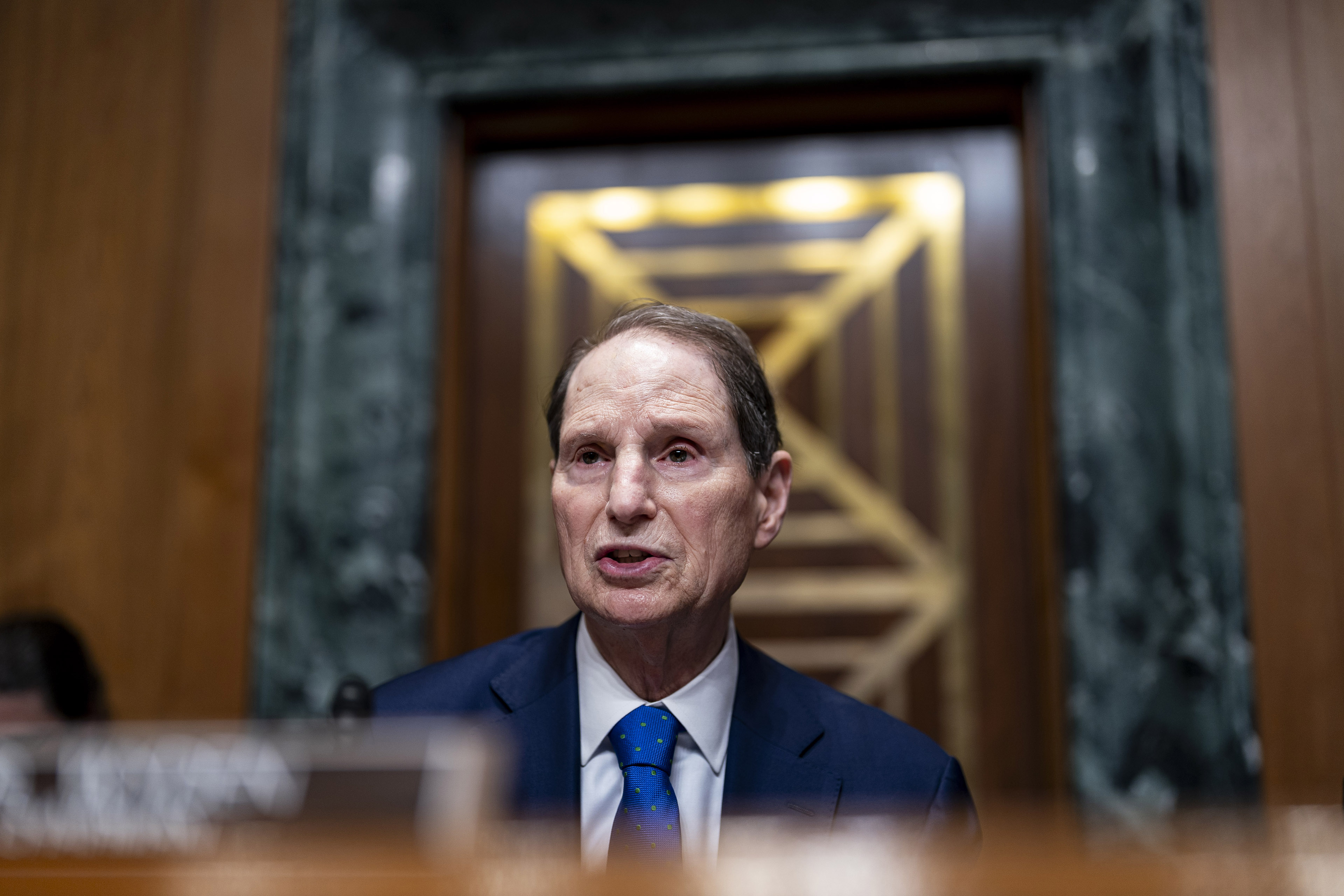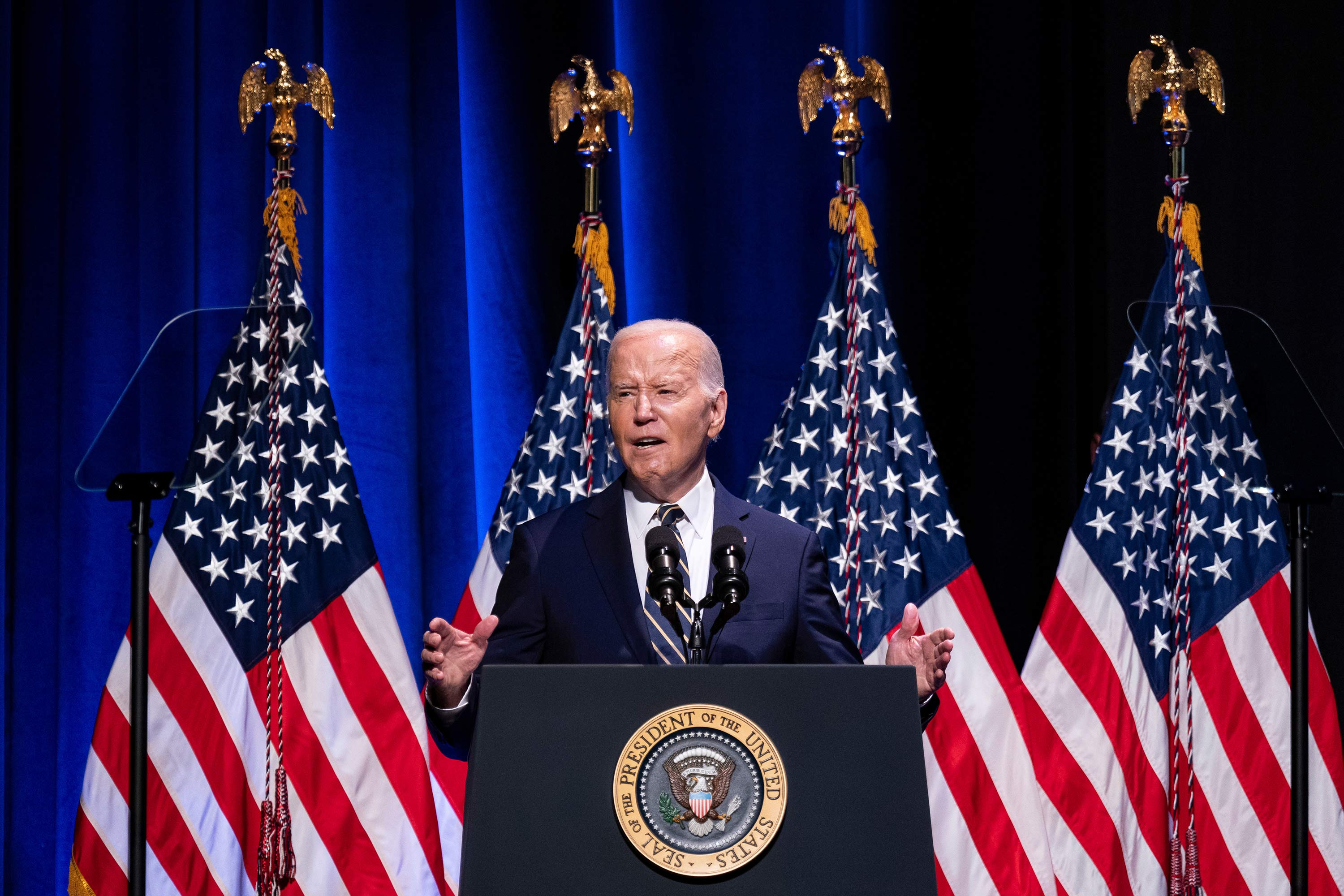Dan Weissmann
Medicaid — the state-federal health insurance program for low-income and disabled Americans — has cut more than 22 million recipients since spring 2023.
One of them was the son of Ashley Eades. Her family lost their Medicaid coverage in the “unwinding” of protections that had barred states from dropping people for years during the covid pandemic.
Many families, including Ashley’s, still qualify for Medicaid but lost it for “procedural reasons.” Basically, missing paperwork.
The unwinding process has been messy.
In this episode, host Dan Weissmann talks with Ashley about the months she spent fighting to get her son reenrolled in 2023 to get an on-the-ground look at how the unwinding is affecting families.
Then, Dan hears from staff at the Tennessee Justice Center, Joan Alker of Georgetown University’s Center for Children and Families, and KFF Health News correspondent Brett Kelman, who has been covering Medicaid in Tennessee for years.
Dan Weissmann
@danweissmann
Host and producer of “An Arm and a Leg.” Previously, Dan was a staff reporter for Marketplace and Chicago’s WBEZ. His work also appears on All Things Considered, Marketplace, the BBC, 99 Percent Invisible, and Reveal, from the Center for Investigative Reporting.
Credits
Emily Pisacreta
Producer
Adam Raymonda
Audio wizard
Ellen Weiss
Editor
Click to open the Transcript
‘An Arm and a Leg’: Medicaid Recipients Struggle To Stay Enrolled
Note: “An Arm and a Leg” uses speech-recognition software to generate transcripts, which may contain errors. Please use the transcript as a tool but check the corresponding audio before quoting the podcast.
Dan: Hey there. You know what we have NEVER talked about on this show? Medicaid. The big, federally-funded health insurance program for folks with lower incomes. And I did not realize: That’s been a huge omission. Because it turns out, Medicaid covers a TON of people. Like about a quarter of all Americans. And about forty percent of all children. That’s four out of every ten kids in this country who are insured by Medicaid.
And this is the perfect time to look at Medicaid because– well: tens of millions of people are losing their Medicaid coverage right now. It seems like a lot of these people? Well, a lot of them may actually still qualify for Medicaid.
This is all kind of a “Back to the Future” moment, which started when COVID hit: The feds essentially hit pause on a thing that used to happen every year– requiring people on Medicaid to re-enroll, to re-establish whether they were eligible. And back then, tons of people got dropped every year, even though a lot of them probably still qualified.
The pause lasted through the COVID “public health emergency,” which ended in spring 2023. Since then, states have been un-pausing: Doing years and years of re-enrollments– and un-enrollments– all at once. People call it the “unwinding.” And it’s been messy. And, another thing I’ve been learning: Medicaid operates really differently from one state to another. It even has different names. In California, it’s called Medi-Cal. In Wisconsin, it’s BadgerCare. And this unwinding can look completely different from one state to the next.
We’re gonna look mostly at one state– Tennessee, where the program is called TennCare. And in some ways, according to the numbers on the unwinding, TennCare is… kinda average.
But the problems some people have had, trying to keep from getting kicked off TennCare? Before this unwinding and during it? They sound pretty bad. We’re gonna hear from one of those people– a mom named Ashley Eades.
Ashley Eades: Yeah. TennCare. Put me through the wringer, I tell you what.
Dan: We’ll hear how Ashley spent months fighting to keep her son Lucas from getting kicked off TennCare. And we’ll hear from some folks who can help us put her story in perspective. Including folks who helped Ashley ultimately win her fight. Folks who are fighting– in Tennessee and around the country– to keep programs like TennCare from putting people like Ashley through the wringer.
This is An Arm and a Leg– a show about why health care costs so freaking much, and what we can maybe do about it. I’m Dan Weissmann. I’m a reporter, and I like a challenge. So the job we’ve chosen around here is to take one of the most enraging, terrifying, depressing parts of American life, and to bring you a show that’s entertaining, empowering, and useful. Ashley Eades is a single mom in Nashville. She works in the kitchen at Red’s Hot Chicken, near Vanderbilt University.
Ashley Eades: We’re just like every other person in Nashville trying to say they got the best hot chicken.
Dan: Ashley buys her insurance from the Obamacare marketplace, but her son Lucas– he’s 12 — is on TennCare. In April 2023, Ashley got a notice from TennCare saying, “It’s time to renew your coverage!” Meaning Lucas’s coverage. Meaning, welcome to the unwinding! When I talk with Ashley, she uses one word about a half-dozen times:
Ashley Eades: it just was a nightmare. It was a nightmare. So that was the nightmare. A terrible nightmare you can’t wake up from. Oh my god, that was a nightmare.
Dan: So: After Ashley filled out the renewal packet, she got another notice, saying “We need more information from you.” TennCare wanted proof of “unearned income”– like bank statements, or a letter saying she was entitled to something like workers compensation– or a court-ordered payment. But Ashley didn’t have any unearned income. Lucas’s dad was supposed to pay child support, but– as Ashley later wrote to state officials– he didn’t have regular employment so couldn’t pay.
Ashley says she called TennCare for advice and got told, “Never mind. There’s nothing to send, so you don’t have to send us anything.” Which turned out to be wrong. A few weeks later, in May, TennCare sent Ashley a letter saying “Why your coverage is ending.”
It gave two reasons: First, it said “We sent you a letter asking for more facts… but you did not send us what we needed.” It also said “We’ve learned that you have other insurance” for Lucas. But she didn’t. And not having insurance for Lucas was going to be an immediate problem. He got diagnosed with epilepsy a few years ago, and he needed ongoing treatment.
Ashley Eades: he was on three different medications. I mean, that alone would cost me about $1,500 a month with no health insurance. And this is anti-seizure medication. Like we can’t just stop it
Dan: Yeah. Ashley says she did everything she could think of: mailed in paper forms, submitted information online, and made a lot of phone calls.
Ashley Eades: like back and forth on the phone with people I don’t even know who Italked to, just dozens and dozens of people I talked to. And every single time it was go through the same story over and over and over and over and over again and just get transferred Put on holds, you know disconnected yelled at, told I’m wrong like
Dan: It went on for months. She reapplied. She was approved. Then she was un-approved. She appealed. The appeal was denied. Then, in July, the full nightmare: Lucas ended up in the emergency room after a seizure. While he was officially uninsured.
Ashley Eades: I just didn’t know what to do. Like, I was shutting down mentally.
Dan: And then, out of nowhere, a relative mentioned that a nonprofit called the Tennessee Justice Center had helped *her* out with a TennCare application. Ashley called the group right away.
Ashley Eades: and I’m not a spiritual person, but they were like a fudging godsend. You know what I mean? Like, it was amazing
Dan: A client advocate named Luke Mukundan looked at all of TennCare’s letters to Ashley and confirmed one thing right away: Ashley wasn’t wrong to be confused.
Ashley Eades: He’s like going through all of these letters and he’s like, it doesn’t even make sense
Dan: Later I talked with Luke, on kind of a lousy Zoom connection. But he said to me: This was confusing, even to him.
Luke Mukundan: she was providing the information that they asked for, um,
Dan: But they kept asking the same questions. And they kept saying that her son had some other insurance.
Luke Mukundan: when I knew and she knew that wasn’t the case
Dan: Luke’s boss at the Tennessee Justice Center, Diana Gallaher, told me she wasn’t surprised that Ashley got confused by that early question about un-earned income. She says the process can be really confusing.
Diana Gallaher: Heck, I get confused. I still, I’ll look at a question and say, you know, wait, what are they asking? How do I answer this one?
Dan: And you’ve been doing this for a while, right?
Diana Gallaher: Oh, yeah. Yeah.
Dan: How long have you been doing this?
Diana Gallaher: Since 2003, 2004.
Dan: More than twenty years. Of course, Ashley’s been going through this process at an especially rough time: The unwinding. When so many people were going through this process at once.
For instance, Luke and Diana say the help lines at TennCare were super-jammed– like, it wasn’t unusual to spend 45 minutes or an hour on hold.
By the time Ashley found the Tennessee Justice Center, it was August. She’d been fighting alone for months. Luke helped Ashley with a new appeal. And on September 22, TennCare sent Ashley an update. Her son is approved. “You qualify for the same coverage you had before,” it says. “And you’ll have no break in coverage.”
So Ashley’s “nightmare” was one person’s experience of the unwinding. But it’s not a one-off: According to reports from KFF and Georgetown University, more than two-thirds of the people who lost Medicaid in the last year were disenrolled, like Ashley, for what are called “procedural reasons.” Missing paperwork.
Now, some of those people who got dropped for “procedural reasons” probably didn’t even try to renew Medicaid because they didn’t need it anymore. They had new jobs that came with insurance.
But we know those folks are in a minority. Researchers at KFF– the parent group of our journalist pals at KFF Health News– did a survey of folks who got dropped from Medicaid. Most of them– seventy percent– ended up either uninsured or, the biggest group, back on Medicaid. And again, more than two-thirds of the folks who got dropped were cut for “procedural reasons”– paperwork. Like Ashley’s son Lucas.
So, when a lot of people can’t renew their Medicaid for “procedural” reasons, it seems worth looking at that procedure. And what’s happening in the unwinding isn’t actually a new phenomenon. It’s just un-pausing an old procedure– a system that always had these problems. And that’s really clear in Tennessee, because people in Tennessee have been documenting– and fighting– these problems for a long time.
Next up: Taking TennCare to court.
This episode of An Arm and a Leg is a co-production of Public Road Productions and KFF Health News. The folks at KFF health news are amazing journalists– and in fact, we’re about to hear from one of them, right now.
Brett Kelman: My name is Brett Kelman.
Dan: Brett’s an enterprise correspondent with KFF Health News
Brett Kelman: And I report from the city of Nashville, where I have lived for about seven years.
Dan: Brett came to Nashville initially to cover health care for the local daily, the Tennessean. Which meant he heard about Medicaid– about people losing medicaid– a lot.
Brett Kelman: You hear two versions of the same story. You hear patients who get to the doctor’s office and suddenly discover they don’t have Medicaid when they used to, and they thought they still did. And then you hear the other side of that coin. You hear doctors, particularly a lot of pediatricians, where their patients get to their office and then discover in their waiting rooms they don’t have Medicaid.
Dan: And by the way– you noticed how Brett said he heard especially from pediatricians about this issue in Tennessee. That’s because Tennessee is one of the states that never expanded Medicaid after the Affordable Care Act took effect. In those states, Medicaid still covers a lot of kids but a lot fewer adults than other states. Docs treating patients with Medicaid– a lot of them are gonna be pediatricians.
So, Brett’s hearing all of this seven years ago– the before-time. Before the unwinding. Before COVID. People kept losing Medicaid and not knowing about it until they got to the doctor’s office. And Brett wanted to know: how did that happen? He and a colleague ended up doing a huge investigation. And came back with a clear finding:
Brett Kelman: Most of the time, when people lose their Medicaid in Tennessee, it is not because the state looked at their finances and determined they aren’t qualified. Paperwork problems are the primary reason that people lose Medicaid coverage in Tennessee.
Dan: Brett and his reporting partner used a public-records request to get a database with the form letters sent to about three hundred thousand people who needed to renew their Medicaid coverage.
Brett Kelman: And what we determined was that, you know, 200,000 plus children, had been sent a form letter saying that they were going to lose their Medicaid in Tennessee, again, not because the state determined they were ineligible, but because they couldn’t tell.
Dan: About two thirds of people in that database got kicked off Medicaid for “procedural reasons”– paperwork issues. This is years before the current “unwinding” but that two-thirds number, it’s pretty similar to what we’re seeing today.
Brett Kelman: And, you know, that raises a lot of questions about if we’re doing the system correctly, because do we really want to take health care away from a family who is low income? Because somebody messed up a form or a form got lost in the mail.
Dan: Around the time Brett published that story in 2019, the Lester family found out that they had lost their Medicaid– because a form had gotten lost in the mail. It took them three years to get it back. Brett met them at the end of that adventure
Brett Kelman: they were a rural Tennessee family, a couple of rambunctious boys who seemed to injure themselves constantly. And honestly, I saw him almost get hurt while I was there doing the interview. One of the young boys had. Climbed up to the top of a cat tower. And I believe jumped off as I was interviewing his parents and I could see the insurance, I could see the medical claims racking up before my eyes.
Dan: In 2019, one of the boys had broken his wrist jumping off the front porch. And when the Lesters took him to the doctor, that’s when they learned they’d been cut from Medicaid. Over the next three years, they racked up more than a hundred thousand dollars in medical debt– dealing with COVID, with more injuries, with the birth of another child. Finally, the Tennessee Justice Center helped them get Medicaid back– and figure out what had gone wrong.
Brett Kelman: And when it all came down to it, we eventually determined that this paperwork that their health insurance hinged on, the health insurance that they were entitled to, they had lost it because the state had mailed that paperwork to the wrong place.
Dan: Oh, and where had the state been mailing that paperwork to? A horse pasture.
Brett Kelman: It wasn’t far from their house, but there was certainly no one receiving mail there
Dan: Was there like a mailbox for the horses? Like where did they, where did it even go? Get left.
Brett Kelman: I don’t remember if there was a mailbox for the horses. I don’t think so. I mean, if you think about this chain of events, they were sent paperwork they were supposed to fill out and return to keep their health insurance, but it went to the horse pasture, so they didn’t fill it out. Then they were sent a letter saying, Hey, you never filled out that paperwork. We’re gonna take your health insurance away. But it went to the horse pasture, so they didn’t fix it, and then they were sent paperwork saying, we’ve cut off your health insurance. You won’t have health insurance as of this date But it was sent to the horse pasture, so they didn’t know about it.
Dan: And their three-year fight to get Medicaid back took place AFTER Brett published his initial story. So, some things, it seemed, hadn’t changed a whole lot. But one thing had happened: In 2020, the Tennessee Justice Center had filed a class-action lawsuit, demanding that TennCare re-enroll about a hundred thousand people who had gotten cut off– the lawsuit alleges, without due process. Here’s Brett’s take:
Brett Kelman: And yes, I recognize that there could just have a Medicaid recipient who is not on top of this and ignores the paperwork and lets it rot in a pile of mail on their kitchen counter. I have some mail like that. I’m not going to pretend like I have never done this, but how do you tell the difference between that person and somebody who never got this paperwork that their child’s health care hinges upon?
Dan: This exact question comes up in the lawsuit. In a filing, the state’s lawyers say TennCare does not owe a hearing to anybody who says they just didn’t get paperwork. “The simple reason for this policy is that it is well known that mail is ordinarily delivered as addressed, TennCare enrollees have a responsibility to keep the program apprised of address changes (as explained to them in TennCare’s notices), and it is exceedingly common for individuals who have missed a deadline to claim they did not receive notice.”
Class action lawsuits move slowly. This one, filed more than four years ago, only went to trial recently. A judge’s decision is … pending. In a post-trial filing, the Tennessee Justice Center tells the stories of 17 people cut off from Medicaid allegedly due to errors by TennCare.
In TennCare’s filings, the state’s lawyers say, in effect: None of this proves there’s a systemic problem. And as a couple people have said to me: You don’t have to set out to build a bad system. If you don’t take care to build a good one, your system will definitely have problems.
We sent TennCare a long note about what we’ve been learning: About Brett Kelman’s reporting, about the class-action lawsuit, and about what happened to Ashley Eades. We asked them for any comment– or to let us know if they thought we’d gotten anything wrong. We haven’t heard back from them.
So, let’s zoom out a little bit to look at how these systems are working across 50 states. The person to talk to here is Joan Alker. She’s a professor at Georgetown, and she runs the university’s Center for Children and Families.
Joan Alker: Yeah, Medicaid really is my jam. I have been working on Medicaid issues for about 25 years now, which is a little frightening.
Dan: So of course she and her colleagues have been tracking how all 50 states have been dealing with the unwinding, compiling all kinds of data. When we talked, they’d just updated a ticker showing how many kids have been dropped in each state.
Joan Alker: We just hit 5 million net child Medicaid decline just today. Um, so that’s very troubling.
Dan: And according to Joan Alker’s report, kids were even more likely to be dropped for “procedural reasons”– paperwork issues– than adults.
Joan Alker: Most of these children are probably still eligible for Medicaid and many of them won’t have another source of coverage. And that’s what I worry a lot about.
Dan: But it varies a TON. A couple states– Maine and Rhode Island– actually have MORE kids enrolled than when the unwinding started. A half-dozen others have dropped very few kids.
Joan Alker: But then we had some states that went out really assertively and aggressively to, um, to To have fewer people enrolled in Medicaid
Dan: Her numbers show that Texas is a standout. They’ve got one point three million fewer kids enrolled in Medicaid than they did before the unwinding… Tennessee– with all the problems documented by Brett Kelman and the Tennessee Justice Center– is kind of around the middle of the pack.
Joan Alker: Unfortunately, this is the norm. Right? When you look at the number of disenrollments nationwide, the average for procedural red tape reasons is 70%. Only 30 percent of those people losing Medicaid nationwide have lost it because they’ve clearly been determined to be ineligible.
Dan: Obviously, Joan Alker is not happy about this. But she is also not hopeless! The unwinding has been an example of what happens– what can happen– when you require people to renew their enrollment every year. But now some states are experimenting with … not requiring that anymore, at least not for young kids.
Joan Alker: …because we know so many of them are going to remain eligible. They’re cheap to insure. They’re not where the money is being spent in our healthcare system. But they need regular care.
Dan: Oregon, Washington, and New Mexico now keep kids enrolled through age six. Another seven states are aiming to do the same.
Joan Alker: This is an idea that we’ve been promoting for like 15 years and we were kind of crying out in the wilderness for a long time, but it’s breaking through now
Dan: I’m not gonna lie. There’s a ton that’s not gonna get fixed with Medicaid anytime soon. We don’t know yet how the judge in the Tennessee Justice Center’s class-action lawsuit is gonna rule. But seeing these fights, it reminds me of something I’ve said before on this show: We are not gonna win them all. But we don’t have to lose them all either.
By the way, a little news about Ashley Eades– our mom in Nashville, who fought to keep her son on TennCare.
Ashley Eades: Last year, I started going back to school, and I’m going to school full time, and I’m working full
Dan: Oh my gosh!
Dan: And she’s home-schooling Lucas.
Ashley Eades: I was like, “we’re going to go to school together, buddy.” Like, we share a desk, you know, and he’s like in class and I’m in class.
Dan: Wow
Ashley Eades: I had to get creative. um, so, yeah, I’m like, working this really crappy, stinky job and going to school
Dan: And it’s working out.
Ashley Eades: I, um, made Dean’s List this semester, like got straight A’s.
Dan: Yeah!
Dan: Ashley wants to go to Medical school. I thought you’d want to know.
Before we go, I just want to say THANK YOU. In our last episode, we asked you to help us understand sneaky facility fees, by sending your own medical bills, and you have been coming through in a big way. We’ve heard from more than 30 people at this point. Some of you have been annoyed by these fees for years– a couple of you have told us about driving 30 or 40 miles across town, hoping to avoid them. And we’ve been hearing from folks inside the medical billing world, offering us some deeper insight. And I could not be pleased-er. Thank you so much!
If you’ve got a bill to share, it’s not too late to pitch in, at arm-and-a-leg-show, dot com, slash FEES. I’ll catch you in a few weeks. Till then, take care of yourself.
This episode of An Arm and a Leg was produced by me, Dan Weissmann, with help from Emily Pisacreta, and edited by Ellen Weiss. Thanks this time to Phil Galewitz of KFF Health News, Andy Schneider of Georgetown University’s Center for Children and Families, and Gordon Bonnyman of the Tennessee Justice Center for sharing their expertise with us. Adam Raymonda is our audio wizard. Our music is by Dave Weiner and blue dot sessions. Gabrielle Healy is our managing editor for audience. Gabe Bullard is our brand-new engagement editor. Bea Bosco is our consulting director of operations. Sarah Ballama is our operations manager.
And Armand a Leg is produced in partnership with KFF Health News. That’s a national newsroom producing in-depth journalism about healthcare in America and a core program at KFF, an independent source of health policy research, polling and journalism. Zach Dyer is senior audio producer at KFF Health News. He’s editorial liaison to this show.
And thanks to the Institute for Nonprofit News for serving as our fiscal sponsor, allowing us to accept tax exempt donations. You can learn more about INN at INN. org. Finally, thanks to everybody who supports this show financially– you can join in any time at arm and a leg show dot com, slash, support– thanks for pitching in if you can, and thanks for listening.
“An Arm and a Leg” is a co-production of KFF Health News and Public Road Productions.
To keep in touch with “An Arm and a Leg,” subscribe to the newsletter. You can also follow the show on Facebook and the social platform X. And if you’ve got stories to tell about the health care system, the producers would love to hear from you.
To hear all KFF Health News podcasts, click here.
And subscribe to “An Arm and a Leg” on Spotify, Apple Podcasts, Pocket Casts, or wherever you listen to podcasts.

